Can’t play, can’t speak: What phones are really doing to your kids
Five-year-olds are turning up to school with low vocabularies and unable to jump, hop or skip. With the blame being put on modern day tech, this is what you need to know.
QWeekend
Don't miss out on the headlines from QWeekend. Followed categories will be added to My News.
For most parents today, the generation gap between themselves and their children seems more like a chasm with the arrival of the digital world.
Technology and screens are here to stay, and so we have to raise our children to be healthy, respectful digital citizens who can navigate the virtual world safely.
First off, let’s clarify what we mean by the screen world. We’re not just talking about TV. We have touchscreen devices in classrooms, laptops, tablets, gaming consoles and of course we have smart phones.
Our devices are now voice-activated, so touching screens may also become a thing of the past.
There are many positives. An obvious example of the benefit of technology could be the way schooling went online during the pandemic.
Although no doubt that has also had negative ramifications with kids spending even more time staring at screens, schooling would have been greatly compromised without it. And think how great tablets and handheld devices are during long trips in the car and on planes.
But it’s natural that parents worry about the effect of this virtually inescapable technology on their children’s lives.
To discuss this thorny, worrying issue, I turn to Dr Kristy Goodwin.
She is a mother of three boys, a digital wellness educator and the author of a book called Raising Your Child in a Digital World: Finding a healthy balance of time online without techno tantrums and conflict.

Technology and development
Dr Goodwin says there is a “displacement effect” and an opportunity cost in terms of technology and raising children.
What this means is that time your child spends sitting with a small device or screen on their lap is valuable time not spent moving, playing and interacting with other humans – all incredibly important developmentally.
Dr Goodwin says there is emerging research that shows that when the average child turns 18, they will have spent the equivalent of one year of their life on digital devices.
The science of child development explores conclusively what children need to grow and thrive.
If their basic development is displaced by technology, and our children are less active and not playing as much with real children in the real world, this will come at a cost.
What we do know, particularly with babies and toddlers, is that the countless hours of modelling safe grown-ups in their lives is essential.
Nothing will ever replicate real human interaction. There are studies of brain scans of infants and babies showing that certain neural pathways are activated when they are looking at a human face but not when they’re looking at an object.
We know that the brain is biologically wired for relational connection – which means we learn best through relationships and face-to-face connection – and screens can be a physical impediment to this.
There’s a colloquial term called ‘brexting’, which refers to when mothers breastfeed while scrolling through and texting on their smart phones.
I’m not out to guilt-trip any tired breastfeeding mums who often might find the only quiet moment they get is while feeding, but it’s important to note that newborn babies rely on facial mapping: it’s one of the main ways babies and parents build strong attachment.
So, it’s plain to see how digital distraction in this example can actually impact a developmental moment.
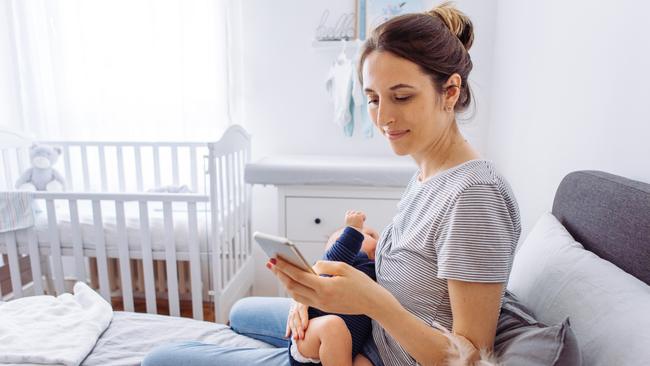
Physical impact
Many early childhood educators are telling me that already we have five-year-olds turning up to school with the lowest level of oral vocabulary the teachers have ever seen for this age group.
They also report an increase in poor self-regulation, an inability to initiate play with others, and weaker fine and gross motor skills.
These changes are what happens when technology displaces activities that kids need to do and in the past tended to do quite naturally.
In 2019, an Australian study found that there has been an 80 per cent drop in children’s capacities to jump, hop, skip and slide in the past 20 years.
Physical passivity does not only impact physical wellbeing, it impacts our brain’s capacity to integrate complex sensory and spatial information, and that is why this displacement needs to be in the back of every parent’s mind. Physical movement also helps the emotional brain discharge excess cortisol – the stress hormone that is a part of meltdowns and tantrums.

I have heard from allied health professionals that there are a significant number of our three-, four- and five-year-olds who are ending up with back pain and having to visit a physiotherapist.
This is because of the stooped position of the spine when using a device on the lap. A child who plays on monkey bars and climbs trees develops a stronger shoulder girdle that would counter this kind of negative impact on the body.
Common sense must prevail so that our children’s developmental needs are met, while we still allow them to use the digital world appropriately and safely. This is why it is a constant juggling act for families to achieve that healthy balance.
Digital distraction
Digital abandonment is a term used to describe when parents are frequently digitally distracted from their children.
When you have your head buried in your phone, you might be missing micro-moments of connection, like when you can give your little one a wink during their swimming lesson or while they’re climbing a tree.
Often there is a tendency to capture experiences with endless photos and videos. This is lovely, but your children cannot see your eyes or your smile because the phone is in the way.
The present moment is what really matters to children, and a parent’s presence and undivided attention even momentarily is an incredible gift that needs to be given often so a child can feel completely secure in that relationship.
Physical proximity is the main glue for healthy attachment, the number-one need for every child ever born.
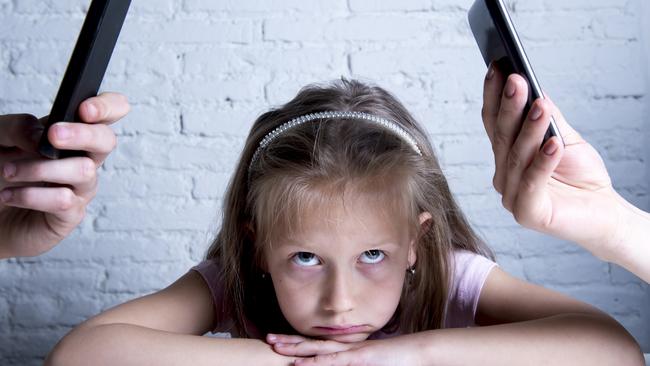
Setting boundaries
Research suggests quite strongly that the combination of more time staring at screens with those rapidly moving blue lights and less time being outside in natural sunlight is negatively impacting the sleep patterns of today’s children.
Poor sleep compromises our children’s health and development as well as learning; it can also make them seriously grumpy, which means more meltdowns and tantrums.
So Dr Goodwin recommends (and implements in her own house) tight restrictions around screen time at least one hour before bed.
She also suggests avoiding rapid-fire, fast-paced interactive types of screen activities before school.
Brain research shows that such activity can hyper-arouse the brain and make it really difficult, if not impossible, for children to sit in class afterwards and listen to their teacher.
Another one of Dr Goodwin’s recommendations is for parents to establish clear rules about who their kids are allowed to interact and play with when going online.
Cyber safety is now one of the biggest issues parents need to be aware of as there is the potential for real harm.
Dr Goodwin has a rule in her house that there is no use of devices in random places around the house, especially on laps; instead, her children must use technology in a designated area within sight of their parents.
It’s definitely a good idea to keep tech out of bedrooms and ensure that dinner time and family time are tech-free zones – and that goes for parents, too.
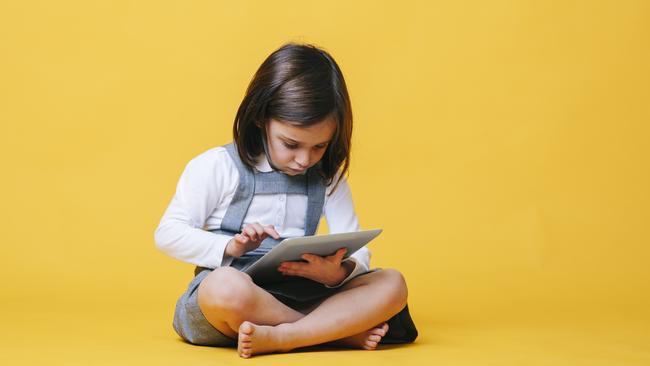
Staying safe online
The intuitive design of phones and apps means our tech-savvy children can get up to all sorts of mischief online – both intentionally and unintentionally.
Some parents have got kids who can’t wipe their bottoms properly yet can download $250 in app purchases online! It’s this natural tech-savviness kids seem to have, however, that can also inadvertently expose them to material they should not be seeing.
We need to recognise that our kids can stumble across inappropriate content quite innocently, and in the same way be approached by predators who would exploit their vulnerability and trust.
Digital experts all agree that sexual grooming does happen in some of the chat rooms in game apps. It’s yet another thing that parents need to be mindful of and have conversations with their children about – before they begin gaming and doing other things online.
Here in Australia, the Office of the eSafety Commissioner (esafety.gov.au) is a fabulous place to start in helping your whole family be safer on the internet.
This site explores everything a parent needs to know about digital safety and what to do when things go wrong.
The endless rewarding that occurs in digital apps, even ones for toddlers, is essentially creating dopamine feedback loops. These are setting up your little ones to being psychologically vulnerable online later on.
We all crave a reward, and when we get conditioned to needing it, especially in an artificial environment, it can change the way our brain is primed and wired.
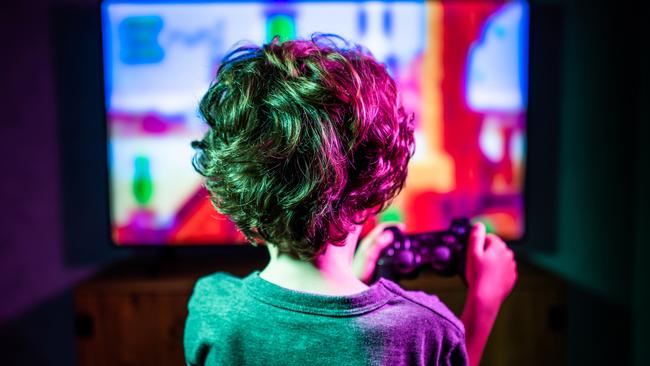
Seeing porn as a child
Children are stumbling on porn on YouTube Kids, YouTube and in side bars and links on kids’ games and apps. Talk to your kids about porn – don’t wait until they’re tweens. It’ll be squirmy, for you and your kids!
But Cath Hakanson from Sex Ed Rescue says that, because our kids are very likely to accidentally stumble on porn – and, yes, some curious kids will search for it via Google – we need to explain what it is and how to deal with seeing it.
We can tell them in simple terms – for example, if they see naked people who may look like they’re cuddling or hurting each other, they should look away, immediately turn off the device and then tell a trusted adult straight away.
Since you can’t always prevent them from seeing inappropriate content at a friend’s house or on someone else’s device on the school bus, we must teach them what to do when they see it. If something makes them feel uncomfortable, whether that is scary pictures or disturbing videos, they need to know what to do. Keep it simple – look away immediately.
Hakanson also recommends:
• Turn off location services on devices so that your child’s whereabouts cannot be tracked by sexual predators.
• Check if games and apps are appropriate.
• Install good-quality parent controls across all devices to prevent your kids from accidentally or intentionally stumbling across violent content and pornography.
This is an edited extract from Parental As Anything by Maggie Dent, ABC Books, $35
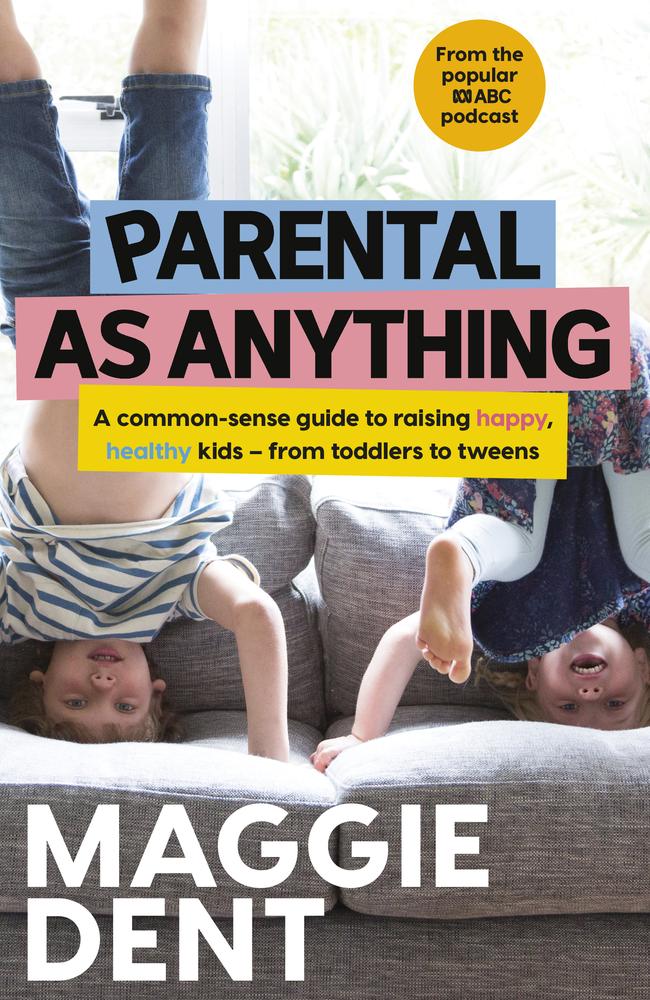
• Avoid exposing your kids to screens as much as possible in the first two years of their life.
• Choose high-quality TV rather than handheld devices and access to apps.
• Just take it one tiny step at a time.
• Work out what’s right for you and your family – maybe it’s no screens during the week, maybe it’s limiting access to the Wi-Fi … whatever it is, work out the rules as a family, communicate them clearly and enforce them consistently.
• Remember to be a good digital role model yourself. Use your screens less and maybe keep your phone out of sight as much as possible.
• Have very clear boundaries and keep devices out of bedrooms.
• Remind your children to look away if they see something that makes them feel uncomfortable.
• Be the pilot of the digital plane. You are the boss, not your children. And even if they hate you for it now, one day they will thank you.
More Coverage
The smart way to keep up to date with your Courier-Mail news




